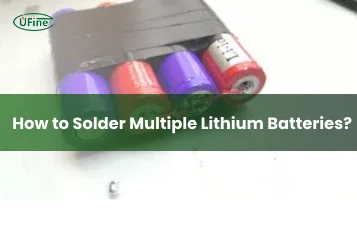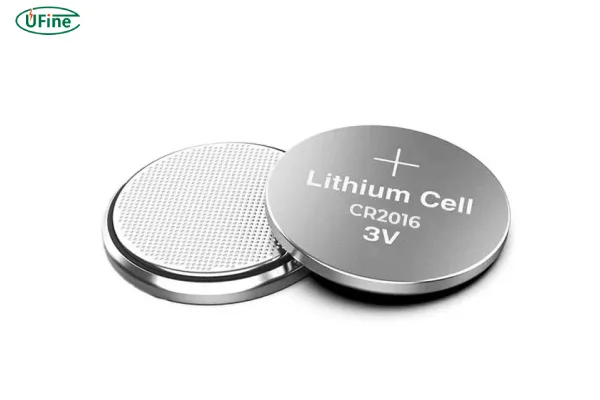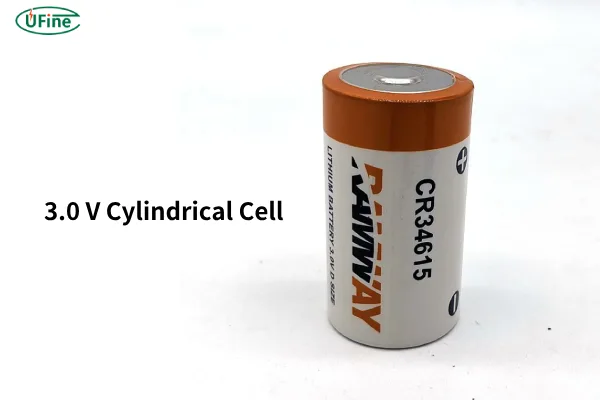3.0V lithium batteries have become essential in modern electronics, powering everything from small gadgets to critical devices. Known for their long-lasting performance and reliability, these batteries are widely used due to their high energy density and stable voltage output. But what exactly is a 3.0V lithium battery? In this article, we’ll dive into the chemistry, types, shapes, and applications of these batteries, as well as answer some common questions like whether they are rechargeable and how long they last.
Part 1. 3.0V lithium battery overview
A 3.0V lithium battery is a type of battery that provides a stable 3-volt output, making it ideal for devices requiring consistent power. These batteries use lithium as the anode, which allows for higher energy density compared to other battery types. Lithium batteries are often favored for their longevity, reliability, and ability to function in a wide range of temperatures.
In terms of composition, these batteries typically consist of a lithium metal or lithium compound as the active material on the anode side. The cathode is usually made of manganese dioxide (Li-MnO2), carbon monofluoride (Li-CFx), or other materials depending on the specific type. A non-aqueous electrolyte is used, which prevents the corrosion issues common in other battery types.
Lithium batteries have a flat discharge curve, which means they can maintain a stable voltage until they are almost fully discharged. This makes them ideal for devices requiring consistent power over long periods.
Part 2. Types
There are several types of 3.0V lithium batteries, categorized by their chemical composition. Here are the most common types:
-
Lithium Manganese Dioxide (Li-MnO2): The most popular type for consumer electronics. These batteries are known for their high energy density and long shelf life.
-
Lithium Carbon Monofluoride (Li-CFx): Often used in specialized applications, this type offers even higher energy density but is more expensive to produce.
-
Lithium Thionyl Chloride (Li-SOCl2): Typically used in industrial or military applications, these batteries are known for their extremely long shelf life and high energy capacity.
Each type of 3.0V lithium battery has different performance characteristics, which makes them suitable for various applications, from everyday electronics to industrial equipment.
Part 3. Shapes
3.0V lithium batteries come in several shapes to suit different device designs and usage scenarios. Here are the most common shapes:
-
Button Cells: Also known as coin batteries, these small, round batteries are often used in watches, hearing aids, and small electronics.
-
Cylindrical Cells: These batteries are longer and have a cylindrical shape, commonly used in devices like flashlights, cameras, and other portable electronics.
-
Prismatic Cells: These are flat and rectangular in shape, designed for applications where space is a concern, such as in smartphones and tablets.
The shape of a battery is an important factor depending on the device, as space constraints and design needs often dictate which type is best.
Part 4. Capacity
The capacity of a 3.0V lithium battery is measured in milliamp-hours (mAh). This indicates how much energy the battery can store and deliver over time. Common capacities for 3.0V lithium batteries vary depending on their type and application.
- Button Cells typically range from 20mAh to 240mAh.
- Cylindrical Cells can range from 500mAh to 3500mAh or more.
- Prismatic Cells have capacities similar to cylindrical cells but in a more compact form.
Choosing the right capacity depends on the power demands of the device. Devices that require continuous or high-current output will need batteries with higher capacities.
Part 5. Is a 3.0V lithium battery rechargeable?
Most 3.0V lithium batteries are not rechargeable. These are typically primary batteries, meaning they are designed for single-use and should be replaced once depleted.
However, there are rechargeable lithium-ion and lithium-polymer batteries, but they usually operate at a nominal voltage of 3.7V rather than 3.0V. So, while you can’t recharge a typical 3.0V lithium primary battery, you can use a 3.7V lithium-ion rechargeable battery for similar applications, depending on the device’s voltage requirements.
Part 6. How long does a 3 volt lithium battery last?
The lifespan of a 3.0V lithium battery depends on several factors, including the battery type, usage, and storage conditions. In general, these batteries are known for their long shelf life and ability to hold a charge for extended periods.
-
Shelf Life: Most 3.0V lithium batteries have a shelf life of 10 to 15 years, making them excellent for devices that require infrequent battery replacements.
-
Usage Life: In continuous use, a 3.0V lithium battery can last anywhere from several months to several years, depending on the energy demands of the device. For instance, a button cell in a watch may last up to 2 years, while the same battery in a more power-hungry device may only last a few months.
The ability of these batteries to provide consistent voltage until they are fully depleted makes them ideal for applications that require long-lasting and reliable power.
Part 7. What devices use a 3.0V lithium battery?
3.0V lithium batteries are commonly used in a wide range of devices due to their compact size and reliable performance. Some of the most common applications include:
-
Watches and Clocks: Button cell batteries are often used in small devices like wristwatches, desk clocks, and timers.
-
Remote Controls: Many TV and other appliance remotes use 3.0V lithium batteries for their long-lasting power.
-
Cameras: Cylindrical 3.0V lithium batteries are often found in digital cameras due to their high energy capacity and ability to handle intermittent high-power use.
-
Medical Devices: Devices like glucose meters, thermometers, and hearing aids often rely on button cell or cylindrical 3.0V batteries.
-
Car Key Fobs: Many modern car key fobs use 3.0V lithium batteries for their small size and reliable performance.
These batteries are also used in security systems, wireless sensors, and various other household gadgets that require long-lasting power.
Part 8. Final words
3.0V lithium batteries play a crucial role in powering modern devices, offering a combination of long shelf life, reliable voltage, and high energy density. Whether you’re looking for a battery for your watch, remote control, or industrial equipment, understanding the types, capacities, and applications of 3.0V lithium batteries can help you make the best choice.
When choosing the right battery, consider factors like capacity, shape, and whether you need rechargeable options. With their versatility and widespread use, 3.0V lithium batteries remain a go-to power source for countless devices.
Related Tags:
More Articles

How to Correctly Solder Multiple Lithium Batteries Together?
Learn step-by-step how to solder lithium batteries in series or parallel safely and effectively with this detailed, hands-on guide.
Choosing Batteries for Trolling Motors Lightweight: Charger Options
Lithium batteries are best for trolling motors as they are lightweight long long-lasting, and efficient. This guide covers selection, charging, and care tips.
Finding 11.1 V LiPo Battery Near Me: B2B Supplier Strategies
Need 11.1V LiPo batteries near you? This guide helps B2B buyers source reliable suppliers, compare specs, and ensure safe, cost-effective deals.
11.1 V LiPo Battery 5000 mAh: Specs That Matter for Industrial Use
An 11.1V 5000mAh LiPo battery offers high capacity and stable power, ideal for drones, robotics, and industrial tools requiring long runtimes.
Lightweight Battery Packs for Trolling Motors: Top Features
Looking for the best lightweight trolling motor battery? This guide covers top features, battery types, and tips to boost your boating performance.





